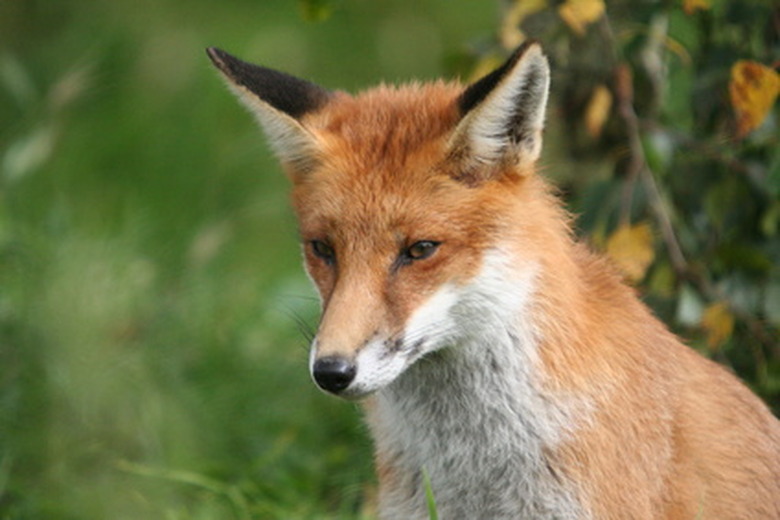Fox Hunting & Eating Habits
In folklore, foxes have a reputation for slyness and cunning and are often portrayed as tricksters that use cleverness to get by despite their small size. Real foxes may not be as quick-witted as their mythological counterparts, but they uphold their reputation through their adaptability. Foxes are not only skilled hunters, but are omnivores that can survive on whatever food is most readily available.
The Fox Diet
The Fox Diet
Foxes are omnivorous, opportunistic hunters and will eat essentially anything easily available or small enough to catch. Fox prey include small mammals and birds as well as large insects, such as grasshoppers, crickets and beetles. In the spring, summer and fall, foxes eat mainly fruit, berries and nuts. In the winter, the lack of available plants forces foxes to switch to meat. In a pinch, a fox will also eat roadkill or dig through trash looking for anything edible.
Hunting Territory
Hunting Territory
Foxes are solitary and require a fairly large hunting range. A single fox may claim a territory from 1 to 5 square miles. A fox continually patrols its territory looking for food, using its urine to mark places it has finished searching. Foxes are territorial and fight other foxes that they find on their territory. Because they wander over such a wide area, foxes maintain several burrows and dens across their territory. In addition to shelter, they use their dens to store extra food.
The Fox's Toolkit
The Fox's Toolkit
Foxes have well developed senses of sight, hearing, touch and smell and use all of their senses to hunt. They can turn their ears, helping them to locate prey by sound. Like many other predators (including humans), foxes have binocular vision, with both eyes facing forward. Because each eye sees the same scene slightly differently, binocular vision allows the brain to calculate distance. Foxes' ears are especially sensitive to low frequencies, and they can hear animals burrowing underground. If it hears an animal underground, a fox can dig it up and catch it.
Fox Hunting Habits
Fox Hunting Habits
Nocturnal animals, foxes hunt at night and rest during the day. Although foxes are closely related to dogs, they do not hunt in packs the way that wolves and coyotes do. The solitary fox hunts more like a cat, slowly and quietly stalking its prey until the fox gets within striking distance. The fox then pounces on its prey and pins the small animal with its paws before delivering the killing bite.
References
Cite This Article
MLA
Quaid, Douglas. "Fox Hunting & Eating Habits" sciencing.com, https://www.sciencing.com/fox-hunting-eating-habits-7812800/. 22 November 2019.
APA
Quaid, Douglas. (2019, November 22). Fox Hunting & Eating Habits. sciencing.com. Retrieved from https://www.sciencing.com/fox-hunting-eating-habits-7812800/
Chicago
Quaid, Douglas. Fox Hunting & Eating Habits last modified March 24, 2022. https://www.sciencing.com/fox-hunting-eating-habits-7812800/
